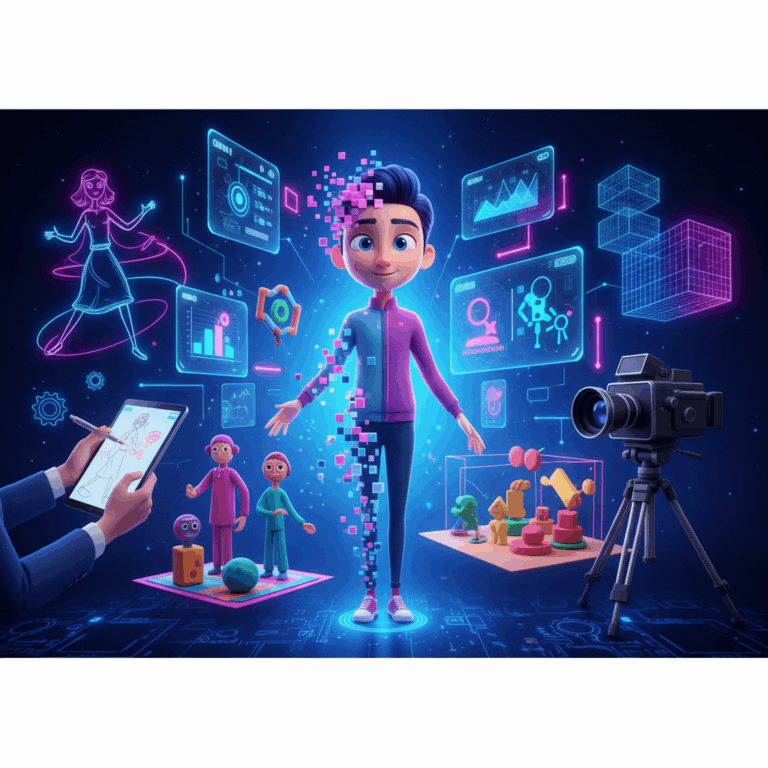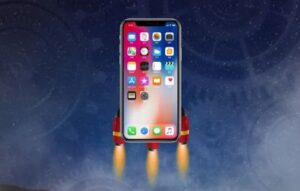Emerging technologies in animation
Animation in 2025 is marked by technological innovations that are redefining production and visual style. The combination of techniques is transforming the sector.
The new tools enhance creativity by automating processes, allowing animators to focus on the narrative and aesthetic exploration of their works.
Use of artificial intelligence in production
The artificial intelligence It revolutionizes animation, facilitating tasks such as rotoscoping, lip-syncing, and AI-powered sequence generation, optimizing time and resources.
This automation frees creators to focus on creativity, expanding expressive possibilities by enabling new narrative and visual approaches.
Tools like RunwayML and Stable Video Diffusion are at the forefront, showing the potential to generate animations from text descriptions or images.
A mix of 2D and 3D animation
The trend towards fusion of 2D and 3D animation It creates a hybrid style that enriches productions, combining visual clarity and spatial depth.
This mix brings originality and aesthetic richness, making the animations more attractive and dynamic for both branding and storytelling.
Recent examples demonstrate how this combination elevates the visual experience by integrating flat elements with complex and expressive three-dimensional environments.
Trends in 3D animation and stop-motion
3D and stop-motion animation are undergoing an exciting evolution, with technological advancements enhancing realism and expressiveness. These traditional techniques are being enriched through innovation and digitization.
The combination of artificial intelligence and new tools allows for more detailed and complex productions, expanding the narrative and visual possibilities in these fields.
Advances in realism and detail with AI
Artificial intelligence is driving a significant increase in realism in 3D animation, simulating anatomical details and emotions with great accuracy.
Hyper-realistic rendering engines and motion capture work together with AI to create more natural and expressive characters and environments.
These advances allow animation to exhibit visual subtleties, increasing immersion and emotional connection with the audience.
Innovations in stop-motion and digitization
Stop-motion animation is being revitalized with advanced software and digital techniques that improve frame-by-frame accuracy.
AI also optimizes post-production and effects integration, reducing costs and accelerating processes without losing the artisanal essence.
These innovations allow for the exploration of new aesthetics and styles in stop-motion, expanding its relevance in the current landscape.
Fun fact about stop-motion
Thanks to digitization, stop-motion can now be combined with 3D animation, creating unique visual hybrids that expand its creative language.
Integration of AR, VR and video games
The integration of augmented reality, virtual reality, and video game elements is transforming 3D animation into interactive and immersive experiences.
These technologies allow users to actively participate in the narrative, exploring animated worlds from multiple perspectives.
The convergence of animation with AR, VR, and gaming opens new avenues for creative expression and connection with wider audiences.
Tools and software that drive animation
Advances in tools and software are revolutionizing animation, enabling faster and more efficient processes. Technological innovation is key to optimizing the creative workflow.
These solutions facilitate the automation of repetitive tasks, thus freeing up time for animators to focus on design and visual storytelling.
Workflow automation and optimization
The automation Using specialized software, it improves the workflow, streamlining stages such as rotoscoping, lip-syncing, and the management of animated sequences.
Tools like RunwayML integrate artificial intelligence to perform complex tasks quickly, reducing costs and enabling more agile production.
This digital optimization frees up creators to focus their efforts on creativity, improving quality and allowing for more frequent iterations in their projects.
Future prospects for the animation sector
The future of animation is characterized by the convergence of techniques traditional and digital, creating increasingly immersive and interactive experiences.
The integration of 3D, stop-motion, AI, and classic animation will open up new possibilities for immersive narratives, where the viewer is an active participant.
Convergence of techniques and immersive experience
Future animation will combine various techniques to achieve experiences immersive and customized, integrating AR, VR and interactive elements.
This trend breaks down boundaries between formats, offering narrative audiences where they can explore and participate, expanding creativity.
Hybrid projects blend the artisanal with the digital, breaking down barriers between the viewer and the animated story, fostering total immersion.
Human role and procedural design in creativity
Although automation and AI are growing, human role It remains essential, especially in the artistic and conceptual direction.
Procedural design will allow the creation of dynamic worlds and characters with less manual intervention, optimizing production without losing originality.
Creatives guide technological tools to achieve emotional and novel results, balancing efficiency and artistic expression.






